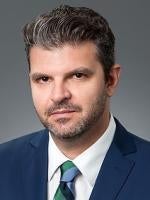Have you been working out recently? We hope so, for today, Day Three of the 40th Annual J.P. Morgan Healthcare Conference, was definitely a day for heavy lifting. Got a challenge that seems overwhelming? A problem that’s big enough to totally scare other folks? Do you eat triathlons for lunch? Well, then you’re going to like the Day Three companies. Let’s talk about fixing the huge American diabetes problem, providing better healthcare for Medicaid and dual eligible beneficiaries, and helping people beat cancer. All that, plus a COVID-19 thought exercise…
Fixing Diabetes: Virta Health
Diabetes is a huge and growing problem in the United States. Approximately 34 million people (~10% of the US population) have diabetes today, with an economic cost of more than $400 billion according to Virta Health, a Day Three presenting company. Approximately 88 million people have prediabetes – that’s 1 of every 3 Americans. What will this look like for America’s health (and our healthcare expenditures) in another 10 years? Sami Inkinen, Virta’s Founder and CEO – a former world champion triathlete who developed Type 2 prediabetes – shared the troubling news that the current modalities for treating diabetes have not resulted in better outcomes for people, even with the huge medical spend in the U.S. for diabetes. The Centers for Disease Control and Prevention notes on its website that the number of new diagnosed cases of Type 2 diabetes has significantly increased among U.S. youth and is higher among minorities. Many adults are not aware that they have prediabetes or diabetes. Virta’s CEO Inkinen told his audience that our healthcare system is getting it wrong. We should be focused on diabetes reversal, not managing or caring for the disease.
It’s an interesting thesis – that nutrition and patient interaction on a one-to-one basis can result in a reversal of diabetes or a moderation of the need for insulin. What’s Type 2 diabetes reversal? After a year of treatment, not being on a diabetes specific medication and not meeting criteria for Type 2 diabetes or prediabetes. Virta shared its published research showing that after one year of treatment, 60% of patients reversed type 2 diabetes and 83% of patients either reduced insulin usage or removed it altogether. To achieve these results, new patients have high engagement, typically with three times a day interaction in early treatment to help manage the patient’s needs. Virta provides guidance, personalized algorithms, counseling, and analytics, using a whole person health approach (if you don’t know what that is, read our Day 2 Notes post here). This can result in significant cost savings to the healthcare system. Customers are large employers and health plans which offer this service to employees and members. Interestingly, in 2021, Virta expanded its offerings from solely diabetes to also include prediabetes and obesity. This effectively means that Virta’s total addressable market now could be 50% of the U.S. adult population. Its treatment approach, per CEO Inkinen, also can be applicable to, among others, hypertension, cardiovascular disease risk factors and inflammation.
So with diabetes medications costing over $60 billion per year, the question is why haven’t we, as a healthcare system, been using a Virta-like approach with nutrition, support and other methods to reverse or control diabetes? The cost of such intervention is small compared to the cost of ongoing treatment and diabetes’ other adverse effects. It’s care versus cure, and in this case, the cure may be well worth the cost.
Making Medicaid Better and Physicians More Accessible: Cityblock Health and ZocDoc
Keeping on the theme of digital technology enabling patients and providers in the continuing evolution of value-based care, we saw two interesting presentations today. First, there was Cityblock Health which, like many of the other provider presenters, stressed an omnichannel engagement thesis with a digital platform as the key to connecting its providers with their patients. Cityblock is differentiated in a few ways. Cityblock is solely focused on the Medicaid and dual-eligible population in underserved geographies. As we know, the managed Medicaid and dual eligible marketplace has a spend of almost $1 trillion. Did you know that on average one of every two babies today is born on Medicaid?
Cityblock’s CEO Toyin Ajayi suggested that underinvestment in primary care, behavioral health and social care in the Medicaid and dual eligible populations result in both (i) high rates of inpatient spend when needs are not earlier met and (ii) elevated total cost of care, particularly for individuals with complex needs. What was that old English saying – pennywise and pound foolish? As Chiquita Brooks-LaSure, CMS Administrator, said yesterday, this is the cost that we pay for not addressing health inequities and disparities.
By investing more in the above underinvested areas, Cityblock aims to reduce hospital stays, and achieved a 20% inpatient admit reduction in its early cohorts. With the cost of an average hospital stay being about $10,000, Cityblock suggested that eliminating a single hospital stay pays for 230 primary care visits, 120 psychiatrist hours, 2 years of food stamps or 600 Uber rides. Seems like a convincing value proposition to us!
With a patient census that is often low-income without access to healthcare provider choices, Cityblock has committed to drawing its staff from the communities it serves by providing a combination of primary care, behavioral and social services to their members with an emphasis on home health services. The goal stressed by Cityblock is to coordinate an otherwise fragmented care plan that many of Cityblock’s members face in an effort to address those underlying health issues that often result in Cityblock members turning to acute care settings for treatment – an outcome that dramatically increases the cost of care. Utilizing an easy-to-use phone app (as most Cityblock patients have smartphones) as well as providers and care coordinators from within the community, Cityblock has been able to build a dedicated and engaged team serving over 100,000 patients in five markets after only two years. Cityblock receives recurring risk revenue of about $15 to $30 thousand per year and cares for patients with complex needs, with 75% having 3 or more chronic conditions, 26% with a behavioral health diagnosis and 58% with low social support.
So, let’s recap – healthier people, lower costs, more jobs in local communities, check! Less stress on hospitals and state budgets, reduced tax burden as healthcare costs drop, check! Everyone is using this model now? No? Well, why not?
We also heard from ZocDoc which has focused on creating the premier digital physician marketplace. Think Airbnb as the model. If you want to see a doctor, you don’t need to call the doctor’s office, leave a message (because the staff is out to lunch), wait a few days to hear back, finally connect with a scheduler and get an appointment two weeks from then (according to ZocDoc, the national average wait time to see a doctor after making an appointment is 29 days). With ZocDoc, a user can login to ZocDoc’s slick app, fill out some helpful information (including insurance information to provide in-network results) and typically see a doctor of his or her choice within 1 day. The application takes care of scheduling and ZocDoc receives a fee from the doctor after the patient visit.
The ZocDoc approach not only helps patients connect faster with the care that they need, when they need it, it also addresses a serious issue that physicians face. While we all think that doctors must be at 100% utilization rates given how hard it can be to get an appointment, the actual numbers are more around 72% once you factor in cancellations and reschedules. Physicians actually end up with perishable inventory (time in this case, which really is money) that they can’t sell because no one is able to track availability and match patients with open slots in real-time. ZocDoc solves this issue through its integration with physician scheduling that allows physicians to fill openings on the fly.
The Test of Cancer: Exact Sciences Corporation
Kevin Conroy, CEO of Exact Sciences Corporation, asked today why, if deaths from cardiovascular disease dropped by 68% from 1969 to 2013, deaths from cancer only dropped by less than half of that, 31%, from 1991 to 2018. His answer: there was more effort made to address early detection, prevention and intervention in heart disease and high cholesterol than with cancer. Exact, the maker of the Cologuard noninvasive test for colon cancer, believes that early cancer detection is the Holy Grail (inside joke for those who follow liquid biopsy companies) and should become a routine part of medical care. Conroy reported screening 2021 year-on-year growth of 30% for Exact.
Bringing tears to my eyes, Conroy brought home the fact that colon cancer is the #2 cancer in the world, with 150,000 new cases and 53,000 deaths each year in America, by sharing that his brother passed away last year from colon cancer at the age of 60 – and his brother had never been screened for colon cancer. Colon cancer is slow growing and often begins with pre-cancerous polyps, making it a good target for effective screening. Exact is also working on breast cancer, a pan-cancer screening test and other products, including treatment guides for certain cancer types.
While there is quite a battle going on now among different modalities of early cancer detection – looking at methylation, DNA mutations and other newer, innovative technologies – it is clear that a more focused effort in our healthcare system to support and broaden early cancer detection will save lives and money. This will be a gamechanger in the future, but it should be sooner rather than later.
Some Thoughts on COVID-19 and What We Have Not Chosen (Yet)
On a separate note, there was some interesting news out of Canada yesterday with Quebec choosing to levy financial penalties on unvaccinated adults. Quebec is not the first to introduce such a penalty, with Austria and Greece also fining the unvaccinated. We’ve wracked our brains in this country on how to increase the vaccination rates amongst our adult population (which is widely accepted as the only way we’ll protect ourselves in the long run from every evolving COVID strain).
This approach may seem draconian to some but in Quebec it is estimated that the 10% of adults who are unvaccinated represent about 50% of intensive care patients. Last year, Singapore also took action, deciding that unvaccinated COVID patients who end up in the hospital must pay their own hospital bills rather than have the government pay for their healthcare. Other countries are taking the opposite approach and paying people to get vaccinated.
The more you know…
What do you think the U.S. should be doing?
Filling in White Space
Catch phrase of the day today was “white space” – that empty area of the TAM (total addressable market) not yet occupied that is just begging to be filled by someone’s “value proposition.” Fee-for-service Medicare is full of white space, value-based care is an evolving white space, vast portions of the country have white space to fill with value-based care/telehealth/chronic care management/gummy worms/person-centered care/half-person care/JPM Day 4! (See it was worth reading all the way through to the end)
See you tomorrow for Notes on Day Four




 />i
/>i
